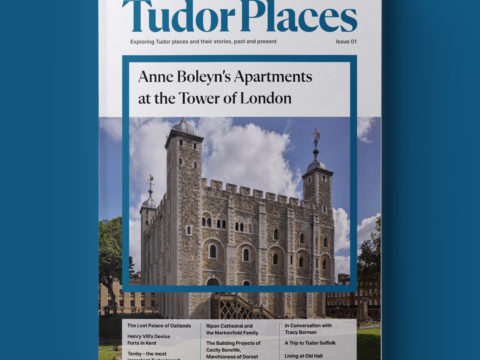Jasper Tudor: Life Story
Chapter 7 : The Slide into War
In the Parliament of 1458 Jasper, together with 59 other peers of the realm, again swore allegiance to King Henry VI. In an effort to reconcile the parties, an act of indemnity was passed absolving the Duke of York, the Earls of Salisbury and Warwick and their supporters, of any responsibility for the Battle of St Albans, which was conveniently blamed on deceased peers.
Despite this, low-level warfare continued. In April 1459 Jasper took control of the disputed Carreg Cennen, Carmarthen and Aberystwyth castles but was subject to attacks from the Sir John Dwnn, a cousin of Gruffydd ap Nicolas and another of York’s retainers.
Further trouble also broke out when the Earl of Warwick, who had been granted the post of Captain of Calais, but was left short of funds, was recalled to England to explain to the King why he had indulged in piracy against the merchant ships of the Hanseatic League. Warwick’s actions were popular with the public as they reduced the competition for English wool, however they led to an increased risk of Continental war which was against official government policy. Warwick’s men brawled with the King’s household and he himself returned to Calais without answering the charges, claiming that his life had been threatened.
The court again moved towards Coventry and Queen Margaret began to recruit forces. At this time the use of the red rose to symbolise the House of Lancaster was not common, and instead badges of the Silver Swan designated loyalty to Henry, Marguerite and their son Edward, Prince of Wales. The Council was summoned to Coventry for 24 th June 1459.
York, Salisbury and Warwick were summoned but, fearing that they would be arrested, they refused to attend. This was in open defiance of the King and the Council indicted them for treason. The Yorkist Lords and their retainers were geographically divided – Salisbury was based at Middleham Castle in North Yorkshire and York, together with his wife, Cicely, and children, was at Ludlow in the Welsh Marches. Both of them began to raise forces.
Thus Queen Marguerite’s choice of Coventry as her powerbase shows her strategic grasp of matters – her forces were between the two main Yorkist groupings. Warwick landed from Calais in the south of England and began to march towards his estates in the southern Midlands. Before he reached Warwick, he turned west towards Ludlow to meet up with York whilst his father, Salisbury, tried to reach Ludlow bypassing to the north of Coventry and then heading down the border between England and Wales. Salisbury’s forces were intercepted by the Lancastrians under Lord Audley at Blore Heath in Staffordshire.
Throughout the Wars of the Roses the Yorkists showed themselves to have superior commanders, winning more of the set-piece confrontations, although they seldom had as many men as the Lancastrians. At this battle, despite Lancastrian superiority of numbers, Salisbury’s tactics won the day and he arrived at Ludlow to meet up with York, Warwick, Andrew Trollope, who was one of Warwick’s captains, Grey of Ruthin and Sir Walter Devereux. Sir William Herbert did not join York on this occasion.
However the Lancastrians were in full pursuit, and had the added advantage of the presence of the King. Not that Henry VI was of any use as a battle commander, but his presence inhibited many men from taking arms against him. Henry was also supported by the sons of the men killed by the Yorkists at St Albans – Henry, 3 rd Duke of Somerset, and Henry, 3rd Earl of Northumberland. It does not seem that Jasper was with the Royal army which encamped at Ludford Meadows, on the opposite side of the River Teme from Ludlow. It has been suggested by his biographer Terry Breverton that instead, he was guarding the road to Ludlow from the west to prevent Welsh Yorkists from reaching the town.
Once again pardon was offered to those in the Yorkist ranks who would return to their allegiance to Henry VI and this offer was taken up by Andrew Trollope – Trollope was an experienced military commander and his loss was a serious blow to York as he commanded the men brought from Calais by Warwick. Trollope remained one of Lancaster’s most devoted adherents until his death at Towton.
In an act of self-preservation that is hard to respect, York, Salisbury, Warwick and York’s two sons, Edward, Earl of March and Edmund, Earl of Rutland, deserted their army to save themselves, slinking away at night. Salisbury, Warwick and March sailed for Calais, whilst York and Rutland took ship for Ireland, with Jasper’s men hard on their heels.
York’s Duchess, Cicely, and her younger children, were put into the custody of Duchess Cicely’s sister, Anne, Lancastrian Duchess of Buckingham. The remaining Yorkists submitted to the King. In an act which hugely undermined the Lancastrian cause, Marguerite allowed her troops to plunder Ludlow.
Sir Jasper Tudor
Family Tree







